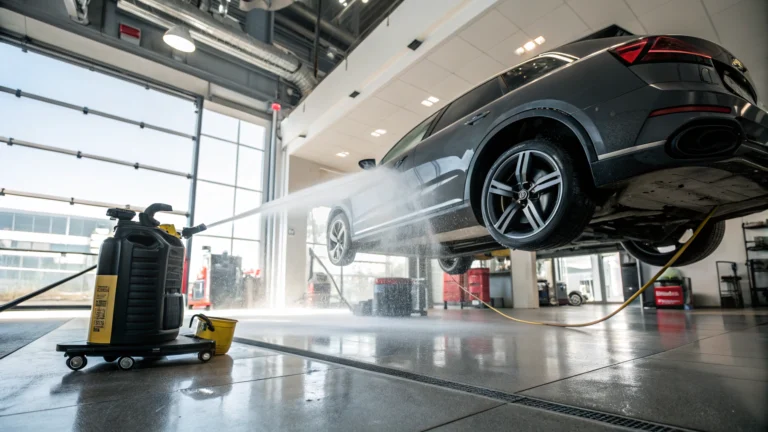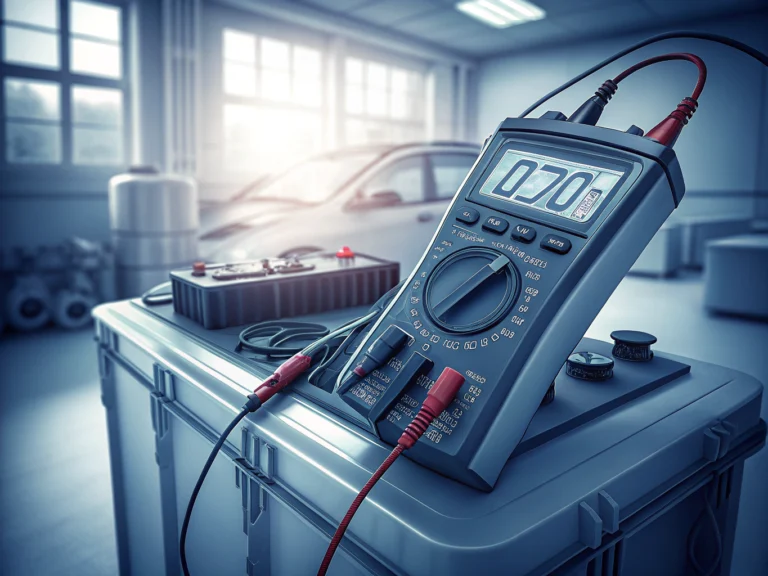Checking Car Fluids: Essential Winter DIY Guide
Table of Contents
Winter is a challenging season for vehicles, making checking car fluids a crucial task for optimal performance. As temperatures drop, proper fluid maintenance becomes essential to ensure reliable transportation on cold, snowy roads.
Understanding the importance of checking car fluids can help you navigate safely through winter. This guide provides practical steps for evaluating and maintaining essential fluids in your vehicle, ensuring it remains dependable during the cold months.
Checking Car Fluids Before Winter | Essential steps to prep for cold weather
Winter driving presents unique challenges that make proper fluid maintenance vital. Cold temperatures can significantly impact how fluids perform in your vehicle. Before the first frost arrives, it’s important to verify that all your car’s vital fluids are at appropriate levels and in good condition.
Engine Coolant/Antifreeze
Perhaps the most critical fluid for winter driving is your engine coolant, also known as antifreeze. Despite its name, coolant doesn’t just prevent your engine from overheating—it also prevents the water in your cooling system from freezing in cold temperatures.
To check your coolant:
1. Ensure your engine is completely cool before beginning.
2. Locate the coolant reservoir, usually a translucent plastic tank near the radiator.
3. Check that the fluid level is between the “min” and “max” lines.
4. Verify the antifreeze concentration using an antifreeze tester, which can be purchased inexpensively at auto parts stores. For winter driving, you need a mixture that protects against the lowest temperatures in your area.
5. Inspect the color of your coolant—it should be bright and clear, not rusty or cloudy.
Motor Oil
Engine oil tends to thicken in cold weather, which can make it harder for your engine to start and run efficiently. Checking car fluids like motor oil is especially important before winter sets in.
To check your oil:
1. Park on level ground and wait until the engine has been off for at least 10 minutes.
2. Locate and remove the dipstick, wipe it clean with a lint-free cloth, then reinsert it completely.
3. Remove it again and check the oil level—it should be between the two marks.
4. Examine the oil’s color and consistency. It should be amber to light brown and smooth, not dark, gritty, or sludgy.
5. Consider switching to a winter-grade oil with a lower viscosity if you live in very cold regions.
Windshield Washer Fluid
Winter driving means road salt, slush, and grime on your windshield—obstacles that impair visibility and create serious safety hazards. Regular washer fluid may freeze in cold temperatures.
To prepare your washer fluid for winter:
1. Top off the reservoir with winter-grade washer fluid that contains antifreeze components.
2. Never use plain water, as it will freeze and could damage your system.
3. Consider carrying an extra container of winter washer fluid in your trunk for emergencies.
How to Check Your Car Fluids Yourself | DIY tips for motor oil and more
Taking the DIY approach to checking car fluids is not only cost-effective but also empowering. Most fluid checks require minimal tools and just a few minutes of your time.
Brake Fluid
Your brake system relies on hydraulic fluid to function properly. Checking this fluid is critical for safety in winter conditions.
To check your brake fluid:
1. Locate the brake fluid reservoir, typically mounted on the driver’s side of the engine bay.
2. Without removing the cap, check if the fluid level is at the “full” line.
3. Inspect the color—brake fluid should be clear to amber. Dark brown fluid indicates contamination and should be changed by a professional.
Consider switching to a winter-grade oil with a lower viscosity if you live in very cold regions. If the brake fluid is low, have your system checked for leaks immediately, as brake fluid doesn’t get consumed during normal operation.
Transmission Fluid
Cold weather can make transmission fluid thicker, potentially causing shifting problems. The process for checking transmission fluid varies by vehicle:
For automatic transmissions with a dipstick:
1. Start the engine and let it run until it reaches operating temperature.
2. With the engine still running and the transmission in park or neutral, check the level and condition using the dipstick.
3. The fluid should be red or pink and should not smell burnt.
For vehicles without a dipstick, transmission fluid checks may require professional assistance.
Power Steering Fluid
While often overlooked when checking car fluids, power steering fluid is essential for easy maneuvering, particularly important when navigating icy or snow-covered roads.
To check power steering fluid:
1. Locate the reservoir, usually near the power steering pump on the engine.
2. Check that the level is between the “min” and “max” marks.
3. The fluid should be clear, amber, or pinkish—not brown or black.
Cold Weather Impact on Fluids | Understand how winter affects fluid performance
Understanding how winter conditions affect your vehicle’s fluids gives you insight into why checking car fluids before the cold season is so important.
Thickening and Viscosity Changes
Cold temperatures increase the viscosity (thickness) of most automotive fluids. Thicker fluids flow more slowly and create more resistance, which can:
– Make your engine harder to start as oil moves more slowly through critical components
– Reduce the efficiency of your transmission
– Increase wear on components that aren’t receiving proper lubrication quickly enough
Freezing Concerns
Water-based fluids can freeze in cold temperatures, potentially causing serious damage:
– Insufficient antifreeze concentration can allow coolant to freeze, potentially cracking your engine block
– Regular washer fluid can freeze in your lines, preventing you from cleaning your windshield
– Condensation in your fuel tank can freeze in the fuel lines if you don’t keep your tank reasonably full
Increased Consumption
Some fluids may be consumed more quickly in winter:
– Battery electrolyte levels may drop faster as the battery works harder in cold weather
– Washer fluid usage typically increases due to dirty road conditions
Regular checking of car fluids is a simple yet effective way to ensure your vehicle remains reliable throughout the winter months. By understanding what to look for and taking a few minutes to perform these basic checks, you can avoid costly repairs and potential safety issues when the temperature drops.
While some aspects of car maintenance require professional attention, most fluid checks are well within the capabilities of the average driver with basic DIY skills. Remember that your owner’s manual is the most reliable source for specific information about your vehicle’s fluid requirements and checking procedures. Taking the time to properly maintain your car’s fluids before winter arrives will reward you with more dependable performance and greater peace of mind during the challenging driving conditions that cold weather brings.
As an Amazon Associate we earn from qualifying purchases.
Shop Related Products:
- Find Engine coolant/antifreeze on Amazon
- Find Windshield washer fluid on Amazon
- Find Motor oil on Amazon
- Find Jumper cables on Amazon
- Find Ice scraper on Amazon
Frequently Asked Questions
Which fluids need to be checked before winter?
Engine coolant, motor oil, windshield washer fluid, brake fluid, and transmission fluid should be checked.
How do cold temperatures affect car fluids?
Cold weather can cause fluids to thicken or freeze, reducing performance and potentially damaging components.
Can I check fluids myself or is professional help needed?
Most fluids can be checked with basic knowledge and the owner’s manual, though a mechanic can inspect more thoroughly.






